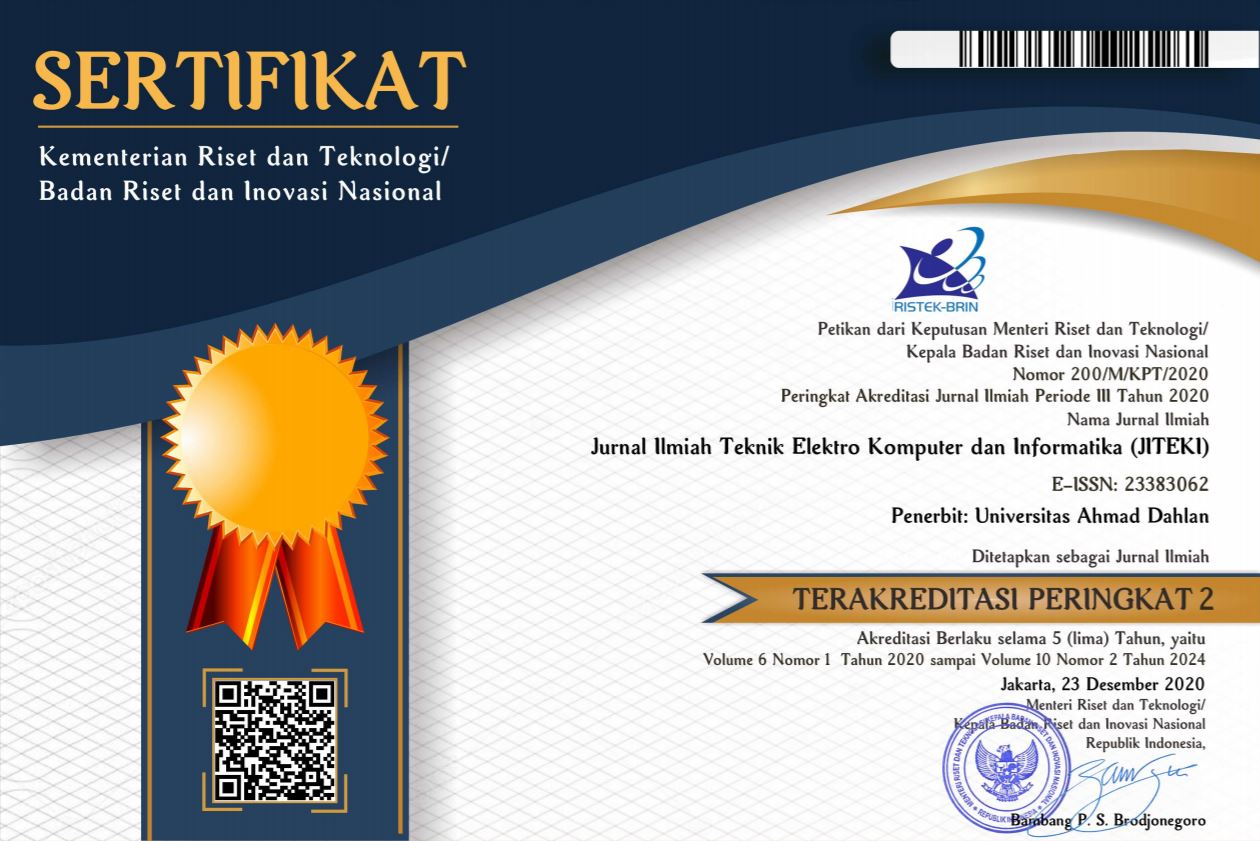Design and Implementation of IoT-Based Monitoring Battery and Solar Panel Temperature in Hydroponic System
Rizky Rahmatullah, Trie Maya Kadarina, Bagus Bhakti Irawan, Reza Septiawan, Arief Rufiyanto, Budi Sulistya, Arief Budi Santiko, Puput Dani Prasetyo Adi, Nicco Plamonia, Ravindra Kumar Shabajee, Suhardi Atmoko, Dendy Mahabror, Yudi Prastiyono
Abstract
Hydroponics is currently widely used for the effectiveness of farming in narrow areas and increasing the supply of food, especially vegetables. This hydroponic technology grew until it collaborated with the internet of things technology, allowing users to monitor hydroponic conditions such as temperature and humidity in the surrounding environment. This technology requires electronic systems to obtain cost-effective power coverage and have independent charging systems, such as power systems using solar panels, where the power received by solar panels from the sun is stored in batteries. It must ensure that the condition of the battery and solar panels are in good condition. The research contribution is to create a solar panel temperature monitoring system and battery power using Grafana and Android Application. Apart from several studies, solar panels are greatly affected by temperature, which can cause damage to the panels. If the temperature is too high, the battery and panel temperature monitoring system can help monitor the condition of the device at Grafana and Android application with sensor data such as voltage, current, temperature and humidity that have been tested for accuracy. Accuracy test by comparing AM2302 sensor with Thermohygrometer and INA219 sensor with multimeter and clampmeter, both of which have been calibrated. The sensor data gets good accuracy results up to 98% and the Quality-of-Service value on the internet of things network is categorized as both conform to ITU G.1010 QOS data based on network readings on the wireshark application. QOS results are 0% Packet loss with very good category, 14ms delay with very good category and Throughput 71.85 bytes/s. With the results of sensor accuracy and QOS, the system can be relied upon with a high level of sensor accuracy so that environmental conditions are monitored accurately and good QOS values so data transmission to the server runs smoothly.
Keywords
Arduino; Accuracy; Grafana; Internet of Things; MIT App Inventor; Monitoring
DOI:
http://dx.doi.org/10.26555/jiteki.v9i3.26729
Refbacks
- There are currently no refbacks.
Copyright (c) 2023 Puput Dani Prasetyo Adi

This work is licensed under a
Creative Commons Attribution-ShareAlike 4.0 International License.
| About the Journal | Journal Policies | Author | Information |
| | | |
Jurnal Ilmiah Teknik Elektro Komputer dan Informatika
Email 2: alfianmaarif@ee.uad.ac.id
Office Address: Kantor Program Studi Teknik Elektro, Lantai 6 Sayap Barat, Kampus 4 UAD, Jl. Ringroad Selatan, Tamanan, Kec. Banguntapan, Bantul, Daerah Istimewa Yogyakarta 55191, Indonesia




